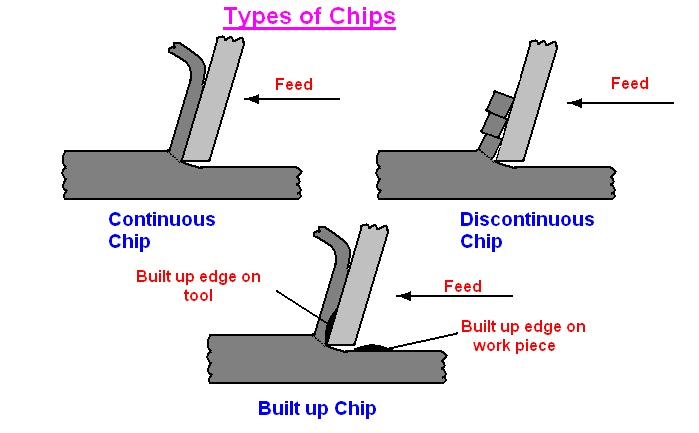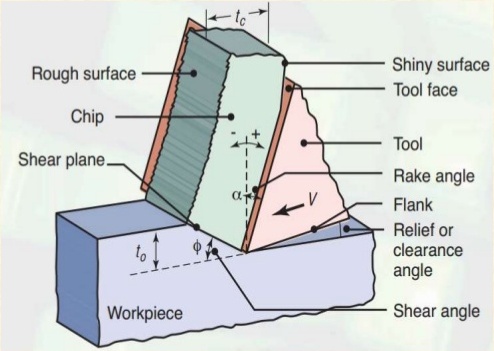15) In determining the various forces on the chip, Merchant assumed that the
all of the above
Related Production Engineering MCQ with Answers
discontinuous chips
Discontinuous chips Discontinuous chips are usually formed during machining of brittle materials like cast iron. The low cutting speed and small rake angle of the tool are responsible for the formation of discontinuous chips.
Continuous chips Continuous chips are produced during machining of ductile materials like mild steel. The high cutting speed and large rake angle of the tool will result in the formation of continuous chips. These chips are in the form of long coils having the same thickness throughout.
Continuous chips with built up edge Continuous chips with built up edge are also produced during machining of ductile materials. The low cutting speed and small rake angle of the tool will result in the formation of continuous chips with built up edge. These chips are also formed when the cutting edge of the tool is dull.

continuous chips with built up edge are formed
Discontinuous chips Discontinuous chips are usually formed during machining of brittle materials like cast iron. The low cutting speed and small rake angle of the tool are responsible for the formation of discontinuous chips.
Continuous chips Continuous chips are produced during machining of ductile materials like mild steel. The high cutting speed and large rake angle of the tool will result in the formation of continuous chips. These chips are in the form of long coils having the same thickness throughout.
Continuous chips with built up edge Continuous chips with built up edge are also produced during machining of ductile materials. The low cutting speed and small rake angle of the tool will result in the formation of continuous chips with built up edge. These chips are also formed when the cutting edge of the tool is dull.

becomes smaller and finally does not form at all
If the cutting speed is increased, then the built -up-edge becomes smaller and finally does not form at all.

direction of tool travel
In metal cutting operations, the shear angle is the angle made by the shear plane with the direction of tool travel.
